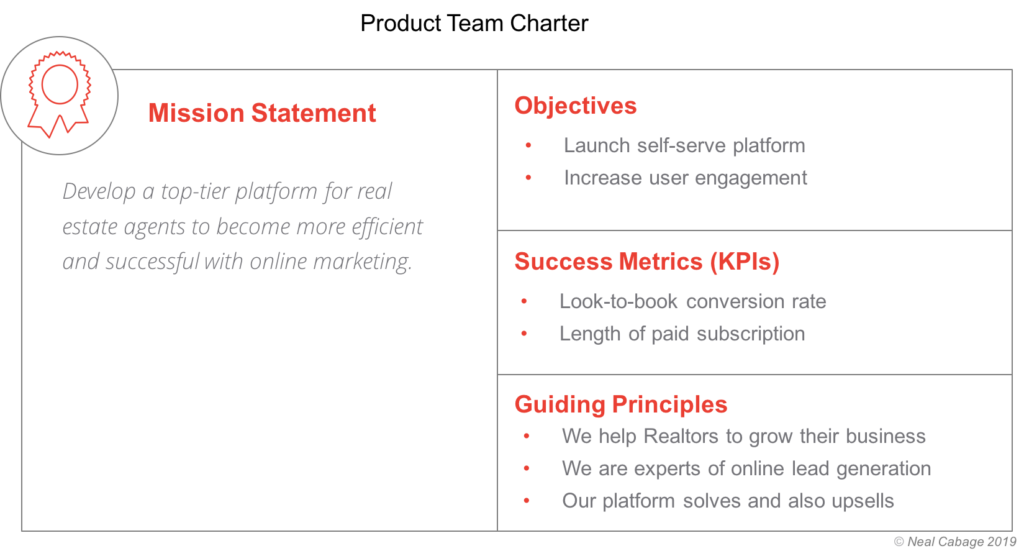Product Team Charters
As a Product Leader, how can you setup your Product Management team for success and ensure they’re pointed in the right direction, without stifling them or micro-managing their work? The work of a Product Manager afterall, is to identify opportunities, understand customer needs, define the bounds of a solution, and prioritize those solutions. If you try to dictate the details for a Product Manager to do, then not really allowing them to do their job.
The answer I’ve found, is to define a lightweight Product charter which provides the inputs they’ll need for context, the outputs expected in terms of the desired outcome, but otherwise allows for the intellectual freedom a Product Manager needs to define ‘what & why’ for their team.

The Product Charter is similar in concept to the the Project Charter that accompanies the kickoff of major projects. For a project that means defining deliverables, milestones, stakeholders and timeline. The Product Charter provides is a similar resource, but assumes a different ownership model and end-goal – and thus a different set of inputs and outputs. Rather than assuming temporary stewardship of a, it assumes long-term streategic ownership. And rather than assuming a goal of delivery, it assumes the goal is to drive a business outcome as measured by Key Performance Indicators (KPIs).
Here are the inputs that I find most valuable:
Mission
What is the product team’s purpose and responsibility? Is the Product Manager responsible for strategy and definition of a new and standalone product? Or perhaps they own a ‘problem space’ of a much larger product, in which case the team is responsible for feature increments to improve overall user engagement and satisfaction with the product. What is the mission they are charged with?
Objectives
Objectives are usually derived from the higher-level Business strategy and a Product strategy will then define more specific and actionable Objectives, that follow SMART principles, and provide actionable guidance to teams about what they need to achieve. A product strategy ideally might have 3-5 objectives, and if there are subdivided feature teams sharing that product, it is likely that a given feature team might have 1-2 objectives that align to their charters. Defining these as part of the charter makes clear any actionable expectations.
Success Metrics (KPIs)
Every objective has a desired outcome, which should be measurable by a success metric, also known as a Key Performance Indicator (KPI). Calling out the primary KPI for each objective can provide further guidance about the exact outcome that the Product Manager & team are expected to achieve (ex: lift conversion rate by 10%).
Guiding Principles
Finally, guiding principles help to align values and ideas that govern what a solution might look like, but providing cultural guard rails. For example, customer relationships might be at the core of your organization’s brand so you’d want to call this out to ensure a solution that achieves the objectives but undercuts customer lifetime value (LTV) in favor of near term sales, is not pursued. There are probably a handful of such principles you’d want to convey in this regard.
Conclusion
That’s all there is to it. A Product Charter is a simple, lightweight way to convey the key details a Product Manager needs to get started and lead their cross-functional teams toward the sort of outcomes you want to achieve. Product Managers are naturally strategic leaders in their own right, so dictating solutions to them, is not going to make the most of their ability to take ownership, frame problems, and identify solutions – its much better if you can provide them the inputs they need for alignment, the outputs you expect, and then get out of their way so they can do great work. Naturally as a leader, you’re there to support your Product Managers when they need it.